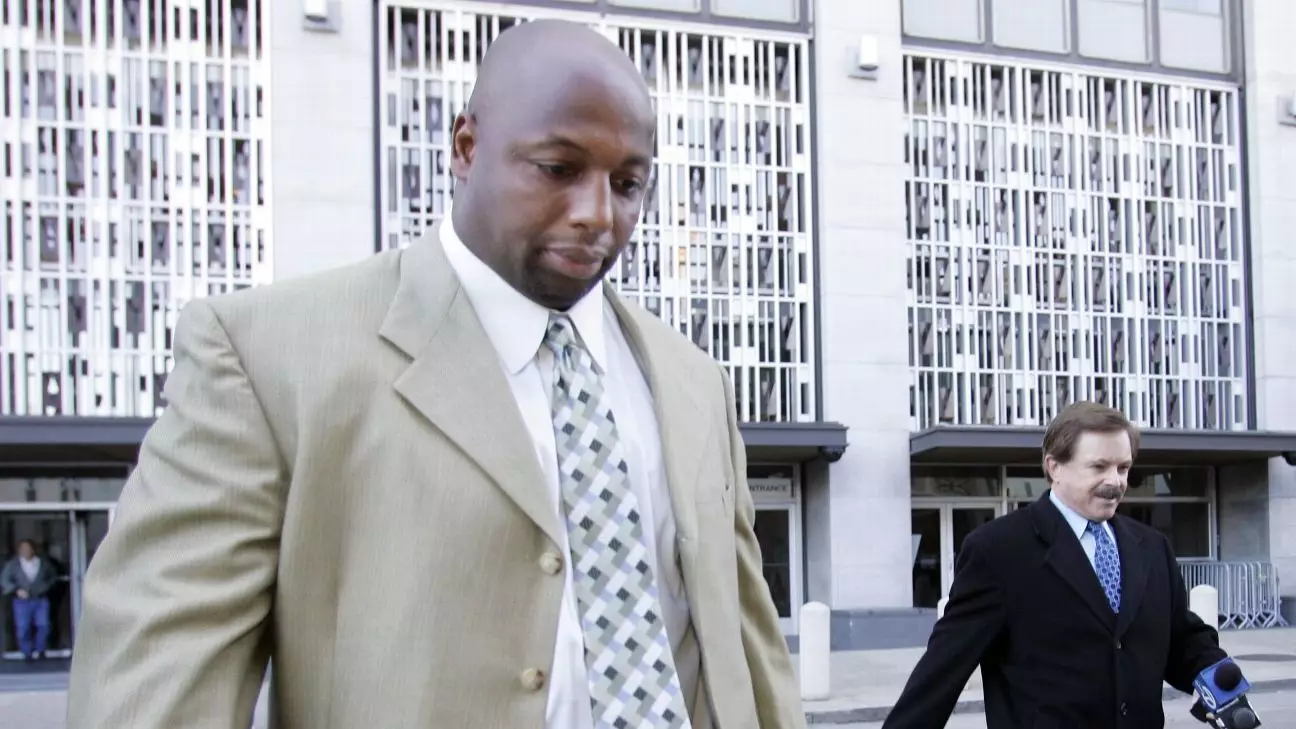Dana Stubblefield is a name synonymous with prowess on the football field. An esteemed defensive lineman, he carved out a notable career in the NFL, particularly known for his time with the San Francisco 49ers where he was recognized as the league’s Defensive Rookie of the Year in 1993. However, his legacy took a harrowing turn when he was convicted in October 2020 for the rape of a developmentally disabled woman, a conviction that led to a shocking 15-year to life prison sentence. This article delves into the subsequent legal turmoil surrounding his case, particularly focusing on the implications of racial bias and the status of his imprisonment.
A pivotal moment in Stubblefield’s life came in December 2024 when the Sixth District Court of Appeal vacated his conviction. The court found that his trial had been marred by racial prejudice, ultimately ruling that the prosecution had violated the California Racial Justice Act of 2020. This significant law, which emerged from the national outcry following George Floyd’s death, aims to prevent discrimination in the criminal justice system. The appellate court noted the use of “racially discriminatory language” during Stubblefield’s trial as a key factor in their decision to throw out the conviction and sentence.
This ruling presented a glimmer of hope for Stubblefield, but legal complexities continued to ensue. As the appeals court had only issued a remittitur that had yet to be finalized, it meant that Stubblefield remained in custody, unable to secure bail or undergo a transfer to a less restrictive detention facility. The case brought to light the murky waters of the justice system, where legal proceedings can be prolonged due to procedural technicalities.
On a recent Friday, Santa Clara County’s Superior Court Judge Hector Ramon ruled against Stubblefield’s request for bail, underscoring that the jurisdiction over the case had not yet returned to the lower court. The argument from Stubblefield’s defense team hinges on the premise that post-vacation of his conviction, he should not remain incarcerated—a sentiment echoed by his attorney Ken Rosenfeld who characterized his client as “legally innocent.”
At the heart of this ongoing battle is the tense interaction between the judicial system and the defendants caught within its machinery. Stubblefield’s attorneys argue that keeping him in prison after his conviction has been vacated reflects a deeper miscarriage of justice, while the prosecution has maintained its position against releasing him, indicating a belief that his incarceration remains warranted despite the appellate court’s findings.
This case reflects an emotional whirlwind not only for Stubblefield but also for all those who have been impacted by it. His identity as a former NFL star juxtaposed with the severity of the charges against him draws public interest, creating a complicated narrative. For many, Stubblefield’s image as a sports hero clashes with the dark circumstances surrounding his conviction and the allegations that precipitated it.
The emotional toll of prolonged legal battles can be staggering, raising questions not just about Stubblefield’s future but also about the implications for individuals who may find themselves in similar circumstances. The narrative surrounding Stubblefield reinforces critical discussions on race, justice, and systemic inequities that persist within the legal framework—a conversation that many in the sports community are now compelled to join.
As Socratic wisdom states, the only absolute is that nothing is absolute. Stubblefield’s case serves as a cautionary tale about the importance of procedural justice and the potential impact of biases within the legal system. While his conviction has been vacated, the struggle for true justice is far from over. The anticipated issuance of the appellate court’s remittitur is a step towards clarity, but it also prompts a broader conversation about race, class, and systemic inequities.
As Stubblefield’s fate hangs in the balance, the larger implications of his case resonate through the courts and into societal discourse, highlighting the need for vigilance against prejudice and an unyielding pursuit of equitable treatment for all. For now, the journey continues, offering lessons on the tenuous relationship between public perception, justice, and race in America.

